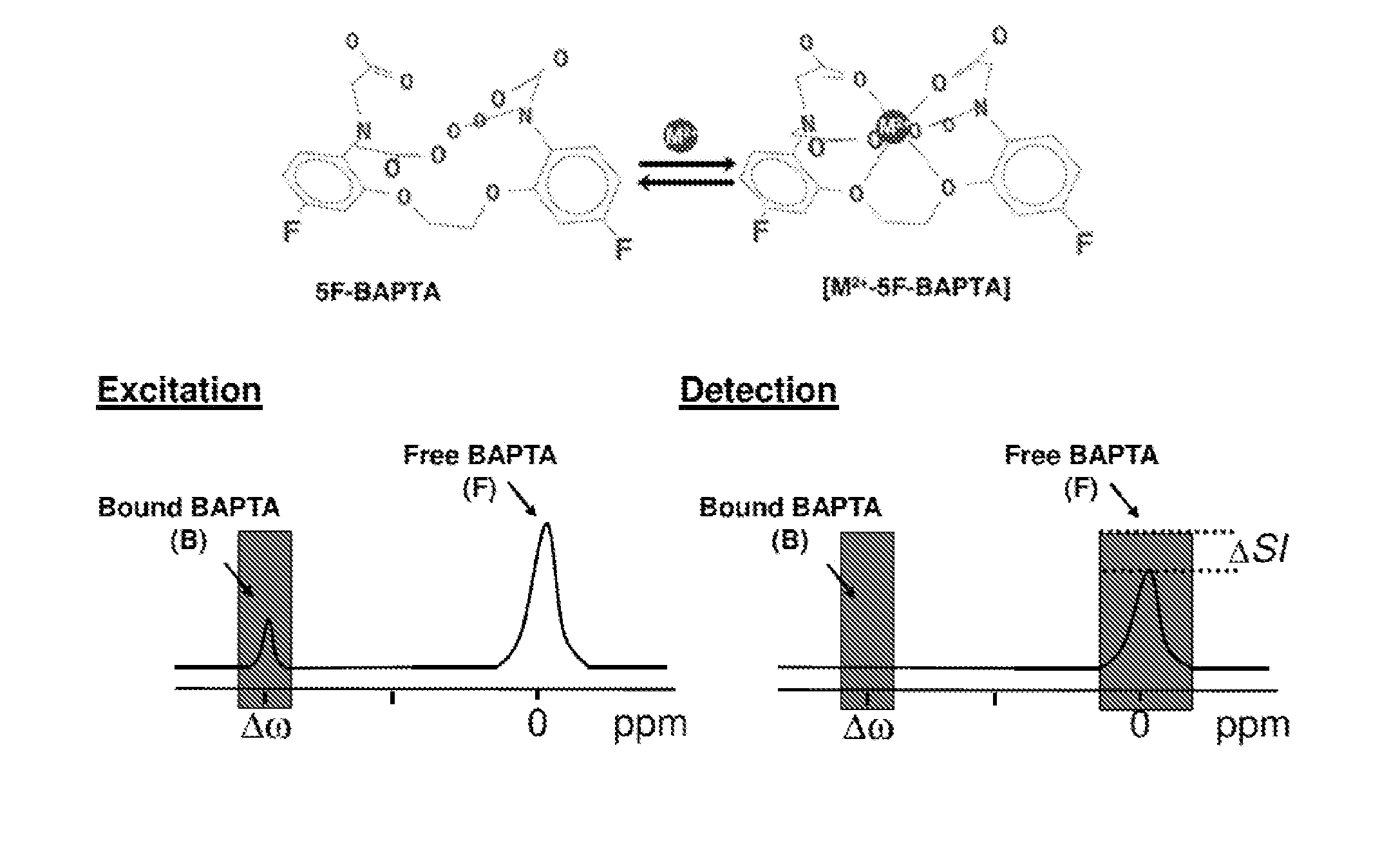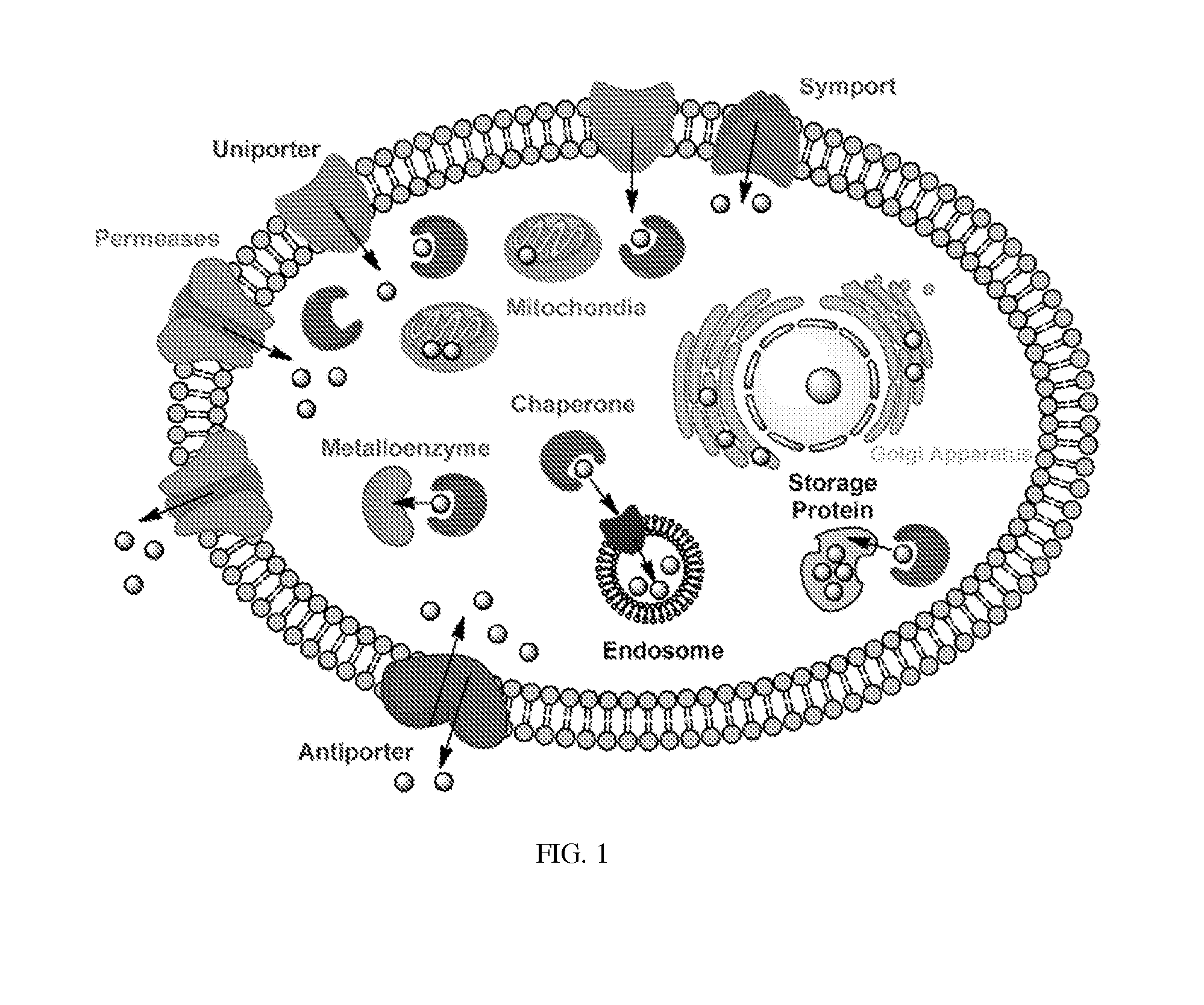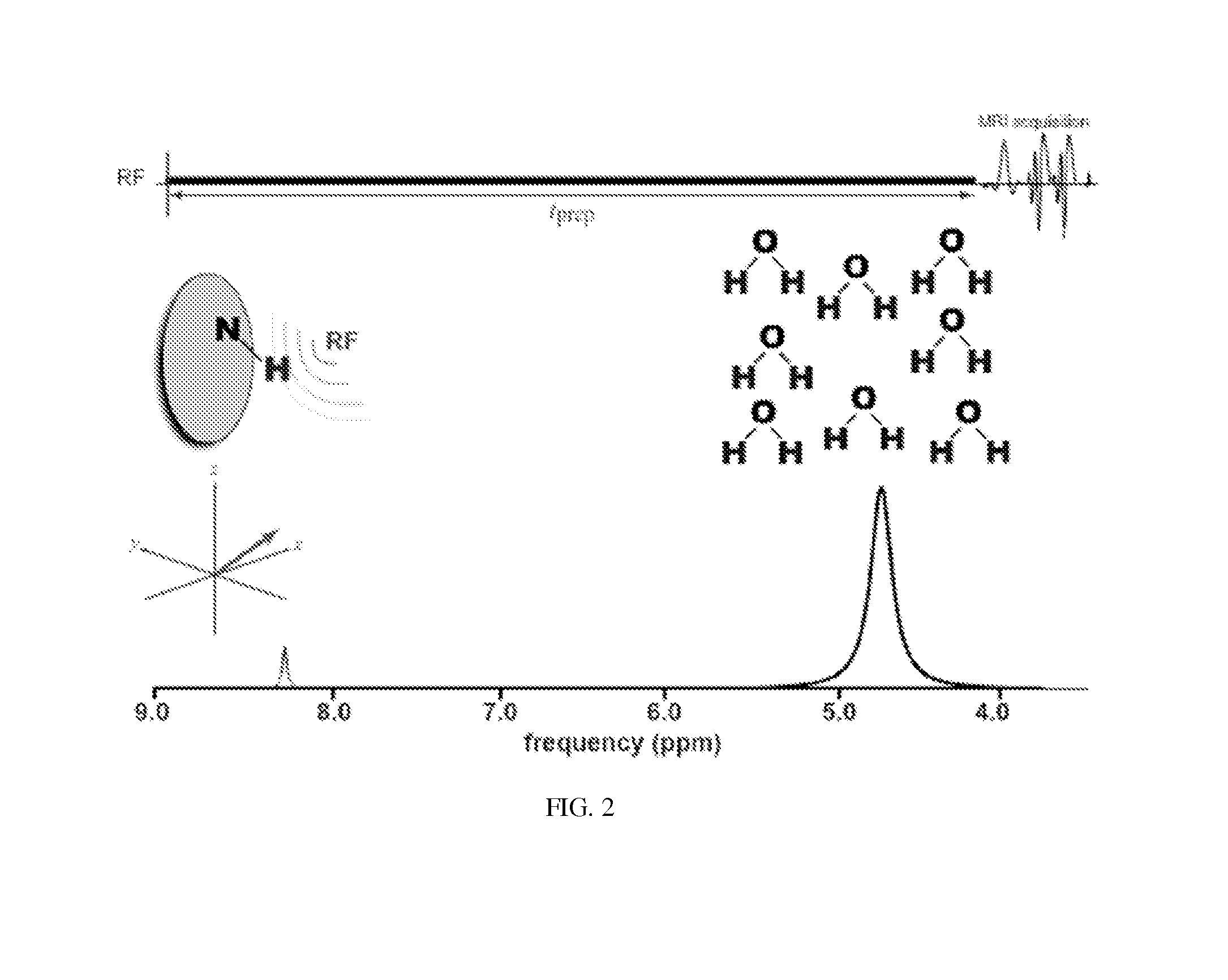Non-invasive sensing of free metal ions using ion chemical exchange saturation transfer
a free metal ions and saturation transfer technology, applied in the field of magnetic resonance imaging, can solve the problems of inability to in vivo imaging of metal ions in deep tissues or organs, restricted imaging of dynamic changes in metal ions levels, and limited specificity and sensitivity of the prob
- Summary
- Abstract
- Description
- Claims
- Application Information
AI Technical Summary
Benefits of technology
Problems solved by technology
Method used
Image
Examples
example
General Methods
Material:
[0140]5F-BAPTA (5,5′-difluoro BAPTA): The difluoro derivative of the tetra potassium salt of [1,2,-bis(o-aminophenoxy)ethane-N,N,—N′,N′, tetra-acetic acid], 5F-BAPTA, was purchased from Biotium, Inc. (Hayward, Calif., USA).
[0141]5F-BAPTA was dissolved in Hepes buffer (40 mM) to a final concentration of 10 mM and the pH was adjusted to the following values: 5.6, 6.0, 6.4, 6.8, 7.0, 7.2, and 7.6. Stock 10 mM solutions of CaCl2, MgCl2, and ZnCl2 were prepared in 40 mM Hepes buffer. Five μL of the stock solution was added to 1 mL of 10 mM 5F-BAPTA resulting in a 200:1 ratio (10 mM: 50 μM) between the free 5F-BAPTA and the M2+ ion following by a pH adjustment. One mL of each sample (with adjusted pH) was transferred into a 8 mm NMR tube within a 25 mm NMR tube in order to center the sample in the coil for the MRI experiments.
19F NMR Experiments:
[0142]19F-NMR spectra were acquired with 11.7 T NMR scanner (Bruker) with a dedicated 19F coil (470 MH...
PUM
| Property | Measurement | Unit |
|---|---|---|
| temperature | aaaaa | aaaaa |
| thickness | aaaaa | aaaaa |
| thickness | aaaaa | aaaaa |
Abstract
Description
Claims
Application Information
 Login to View More
Login to View More - R&D
- Intellectual Property
- Life Sciences
- Materials
- Tech Scout
- Unparalleled Data Quality
- Higher Quality Content
- 60% Fewer Hallucinations
Browse by: Latest US Patents, China's latest patents, Technical Efficacy Thesaurus, Application Domain, Technology Topic, Popular Technical Reports.
© 2025 PatSnap. All rights reserved.Legal|Privacy policy|Modern Slavery Act Transparency Statement|Sitemap|About US| Contact US: help@patsnap.com



